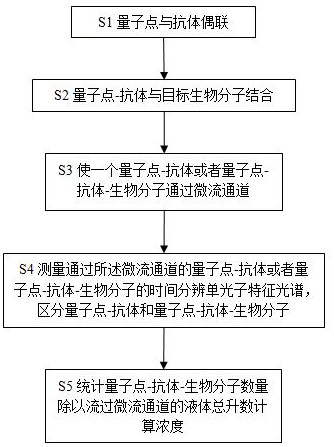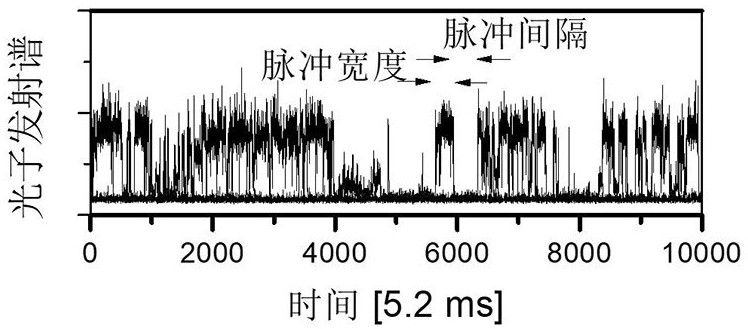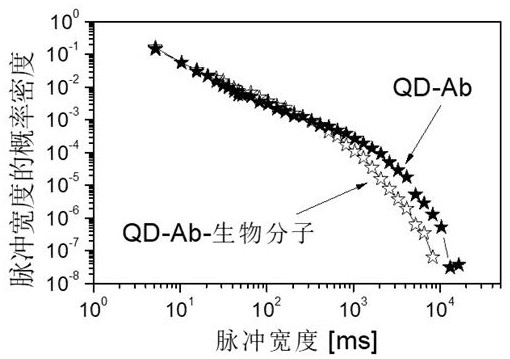A quantum dot-based biomolecule concentration detection method
A technology for biomolecules and concentration detection, applied in the direction of measuring devices, analytical materials, material excitation analysis, etc., can solve the problems that the instrument has not been marketed, it is difficult to find quantum dots, quantum dot fluorescence intensity and wavelength inhomogeneity
- Summary
- Abstract
- Description
- Claims
- Application Information
AI Technical Summary
Problems solved by technology
Method used
Image
Examples
Embodiment 2
[0049] The method for detecting the concentration of biomolecules based on quantum dots involved in this embodiment includes the following steps:
[0050] S1. According to the water-soluble quantum dot QD surface modification (carboxyl, sulfhydryl), through different cross-linking agents and the antibody coupling of the target biomolecule to be detected:
[0051] Using the SMCC (succinimidyl 4-[N-maleimidomethyl]cycloethane-1-carboxylate Eurolink reaction to couple sulfhydryl-activated quantum dots to amino-activated antibodies for amino and sulfhydryl The covalent reaction couples the antibody and the quantum dots to form a quantum dot-antibody stock solution.
[0052] S2. Stir the quantum dot-antibody stock solution with the solution to be tested containing the target biomolecule for 20 minutes, mix and culture to combine the quantum dot-antibody with the target biomolecule, and obtain a mixture containing quantum dot-antibody and quantum dot-antibody-biomolecule solution; ...
Embodiment 3
[0059] The method for detecting the concentration of biomolecules based on quantum dots involved in this embodiment includes the following steps:
[0060] S1. According to the water-soluble quantum dot QD surface modification (carboxyl, sulfhydryl), through different cross-linking agents and the antibody coupling of the target biomolecule to be detected:
[0061] Using the SMCC (succinimidyl 4-[N-maleimidomethyl]cycloethane-1-carboxylate Eurolink reaction to couple sulfhydryl-activated quantum dots to amino-activated antibodies for amino and sulfhydryl The covalent reaction couples the antibody and the quantum dots to form a quantum dot-antibody stock solution.
[0062] S2. Stir the quantum dot-antibody stock solution with the solution to be tested containing the target biomolecule for 20 minutes, mix and culture to combine the quantum dot-antibody with the target biomolecule, and obtain a mixture containing quantum dot-antibody and quantum dot-antibody-biomolecule solution; ...
PUM
 Login to View More
Login to View More Abstract
Description
Claims
Application Information
 Login to View More
Login to View More - R&D
- Intellectual Property
- Life Sciences
- Materials
- Tech Scout
- Unparalleled Data Quality
- Higher Quality Content
- 60% Fewer Hallucinations
Browse by: Latest US Patents, China's latest patents, Technical Efficacy Thesaurus, Application Domain, Technology Topic, Popular Technical Reports.
© 2025 PatSnap. All rights reserved.Legal|Privacy policy|Modern Slavery Act Transparency Statement|Sitemap|About US| Contact US: help@patsnap.com



